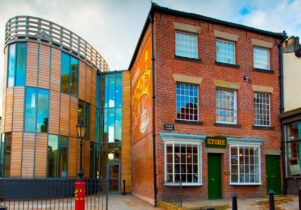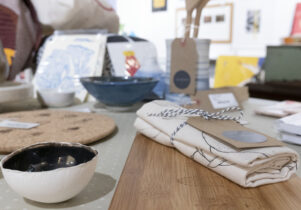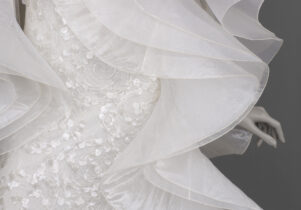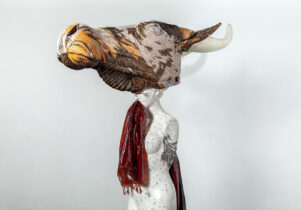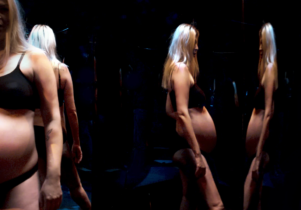Magnus Quaife: While England Mourns at Touchstones Rochdale
Sara Jaspan, Exhibitions Editor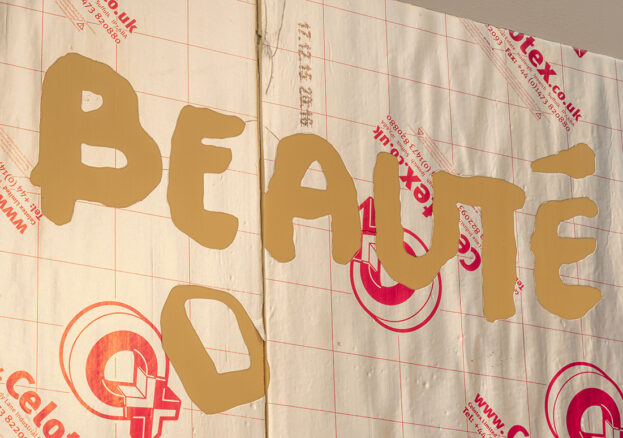
The inherent social injustices that underlie our current system of global capitalism are a frequent subject for powerfully-charged contemporary art and protest. Yet, While England Mourns – a new exhibition by Manchester-based artist Magnus Quaife at Touchstones Rochdale – takes a long view of the historical context leading up to the present; drawing unexpected points of connection between the streets of 18th century Manchester and the series of historic uprisings which swept across France in May 1968.
Exactly 50 years ago, students and workers joined together to form the largest general strike ever attempted in France, protesting against low wages, class divide, political bureaucracy and Charles de Gaulle’s authoritarian government. In order to “give concrete support to the great movement of the workers on strike” a group of students and artists famously occupied the print room of the École des Beaux-Arts in Paris, forming the ATELIER POPULAIRE where they produced bold and iconic graphic posters with defining slogans taken from the press of the protest movement, La Beauté Est Dans La Rue (Beauty Is In The Street).
Far less remembered today is the work of the Urmston-born, Lancastrian satirist and painter, John Collier (1708 – 1786, practicing under the pseudonym Tim Bobbin), who captured the British nation’s attention with his own cutting visual and written response to the political greed and corruption of the upper ruling elite and fractious social events of his time. Among Bobbin’s works included in the exhibition is a vivid depiction of ‘the Shudehill Fight’ of 1757 – one of the many clashes that continued up until the end of the 18th century as food shortages forced the local working-class population to riot against an emergent merchant upper-class, meeting (like the Parisians) with heavy state violence.
Drawing upon the legacies of both the Manchester and Paris movements, While England Mourns features a series of Quaife’s own paintings based on the ATELIER POPULAIRE posters, presented alongside a number of Bobbin’s original works, and three busts of the radical artist. Rather than simply inviting his audience to enjoy these elements as aesthetic objects or artworks, however – or even to observe the shared vein of brave civil disobedience that runs between them – Quaife’s primary intention seems to be to re-activate the original, revolutionary value that they once held.
Instead of lofty museum plinths, for example, Bobbin’s three busts sit atop a set of bricks – often the only ‘weapon’ available to the otherwise unarmed civilian – taken from the gallery’s own social history collection. Likewise, Quaife’s poster paintings appear on warped and peeling sheets of industrial-grade PIR (polyisocyanurate) insulation board, rather than the primed canvases we’re used to; stripping the bold and vibrant designs of the ‘glamor’ that they have since become invested with, and returning them to their original, intended purpose – as “weapons in the service of the struggle” (ATELIER POPULAIRE).
As a result, it seems Quaife is as much hoping to ignite a small flame of rebellion in the bellies of his viewers, as connect us with the many complex threads of history that have led us to the present. As such, While England Mourns promises to be an inspiring exhibition, that will leave you hungry for change.
Also check out: Uprising: Sprit of ’68 – HOME’s new season of films marking the 50th anniversary of the Paris uprisings, and exploring a traditionally under-explored and under-screened period of the French New Wave filmmaker Jean-Luc Godard’s iconic work.

